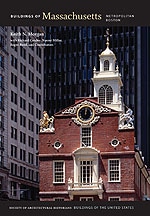
Ten years in planning, this facility reconceptualized waterworks as community center. Camp, Dresser and McKee—a global corporation begun in 1947 as a partnership of MIT sanitation engineers Thomas Camp, Herman Dresser, and Jack McKee—undertook the project from design through construction. Site studies led to demolition and replacement of the former facilities, a Neo-Georgian 1915 structure by George A. Johnson and a 1922 pump house. Recognizing Fresh Pond as a recreational asset, architect Barry Giorgi's design welcomes the public with Romanesque Revival styling and multiple materials (cast stone, granite, brick, and slate). It displays the awesome water process systems through large arched windows. Besides administrative offices and maintenance facilities, the building offers public restrooms, a park ranger, and an ongoing education program. In the lobby, Drawn Water (2001), an art installation by Mags Harries and Lajos Héder, includes a fountain, its water flowing under the entrance portal from the previous water filtration plant (1922, George A. Johnson); a terrazzo and bronze floor map of the Cambridge water system; and a fourteen-foot Plexiglas water column, all stronger in iconography than in design.

